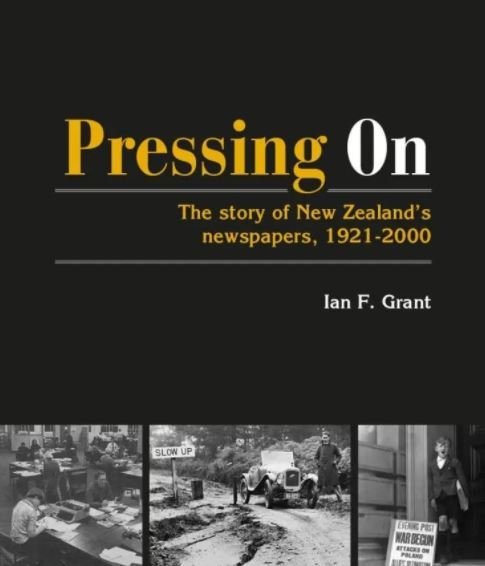
Ian F. Grant has written many books but if you seek his monument then pick up his recent two-volume history of New Zealand newspapers.
His Lasting Impressions, published in 2018, was an invaluable and often humorous record of the industry from 1840 to 1920 and in Pressing On he brings the story up to 2020.
Although the researcher’s treasure trove that is papers past becomes more patchy during the 20th century (but is building up all the time) Grant has cast a wide net to tell the story of the past 60 years.
His own years in publishing provide valuable insights into the industry and its personalities, including financial and legislative pressures, as well as the growth of broadcasting and online outlets which shaped the face of news gathering.
The end result is almost encyclopaedic, although the text has been suitably arranged to give various eras and geographic regions tidy self-contained sections.
Drawing on a multitude of sources and endeavouring to provide all the names and dates can lead to a few minor stumbles, such as finding an editor starting his job in different years, but they are of no real consequence.
A review column provides no opportunity to fully cover the myriad of topics Grant has been able to deal with but he provides the answers to many questions and those questions may give something of the flavour of Pressing On.
When were the glory days of newspapers and when did they begin to fade and why?
What caused New Zealand Truth to become one of the nation’s highest-selling papers and why did it come to an end, deluged in massage parlour ads?
What are the reasons for the phenomenal rise of the weekly giveaway papers and how good are they?
Why did Sunday newspapers take so long to be established?
Can any newspaper claim to be a "national" publication?
What effect did the World War 2 with its censorship and newsprint shortages have on newspapers?
How were newspapers affected by changes in technology?
The answers are all in the book.
Interspersed with all this are the gems.
The story of the reporter from the Levin Chronicle who telephoned Mr Khrushchev during the Cuban missile crisis and ran the story, the paper was fined by the New Zealand Press Association who regarded such activity as invading their own territory.
Newspapers have too many such tales for one man to have collected them all, but Grant manages to capture a wealth of such moments.
Comprehensive as it is, Pressing On has at least one omission of local interest — the colourful story of the Dunedin Gazette of 1973.
The brainchild of two of the characters of the city’s journalistic world, it was cobbled together largely in the old Worthington bar at the European Hotel and lasted only nine weeks owing $440,000 in today’s money.
But for those who were there it has assumed legendary status.
Pressing On has room for only relatively brief summaries of the histories of some of the hundreds of newspapers of the last century.
But most papers have told their story within supplements in their own columns and these are found in the comprehensive footnotes.
Only some papers have had histories published in book form, most notably for Dunedin, Ron Palenski’s book about the Evening Star.
The full story of the Otago Daily Times is still to come.
In the meantime, Grant’s two-volume national history provides extraordinary coverage of the role of newspapers over the past 180 years and is a superb tribute to the men and women who have been part of journalism in this country.
By Jim Sullivan











